I love finding out about extinct animals … the stranger the better! In this not-so-romantic blog, I’ll share with you some strange sea animals from the Cambrian Period.
Imagine Earth more than 540 million years ago.
Back then, all life was underwater. So let’s dive down to investigate the ocean floor.
Believe it or not, there wouldn’t actually be much to see. Most animals were tiny and didn’t really move. After all, what’s the point of swimming around if nothing’s trying to eat you?
Life was very simple, and probably very quiet.
And then came … the Cambrian explosion!

The Cambrian explosion is when an amazing and sudden burst of life happened on Earth. Lots more animals started to appear, and many different types of animal.
Scientists think this happened about 538 million years ago, in what’s called the Cambrian Period (which spanned approximately 541 million to 485 million years ago).
Forget those simple creatures sitting around being boring. Suddenly the oceans were filled with more complex animals with fancy new things, like colours … and heads!
So let’s explore some of the strangest sea animals from the Cambrian Period. And trust me, it’s about to get weird.
(Just to say these animals are all extinct, meaning they died out and no longer exist.)
HALLUCIGENIA
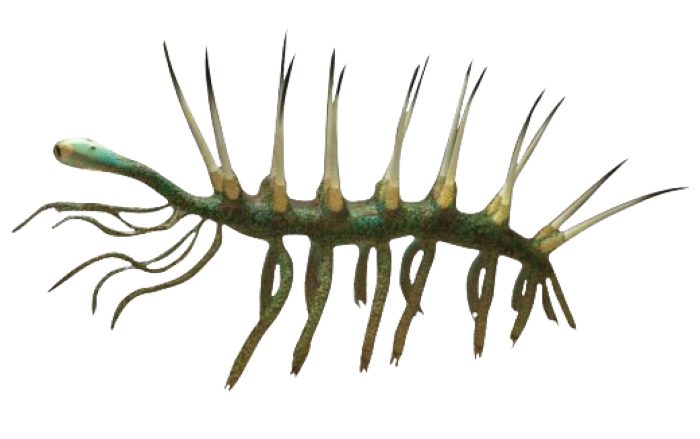
When fossils (or remains found in rock) of Hallucigenia were first discovered, it had scientists stumped. This spiky, worm-like animal was reconstructed in a way that turned out to be both upside down and back to front.
This means someone thought its spines were its legs … and its bum was its head! Or its head was its bum, I’m not sure which is worse. Thankfully, the discovery of tiny eyes and a mouth eventually set them straight.
Some even thought Hallucigenia might have been part of a larger animal. But no, it was just very odd. It was also quite small – no longer than one of your fingers.
It was named because of its “bizarre and dream-like appearance”, which makes sense if you’ve heard of hallucinations before.
ANOMALOCARIS
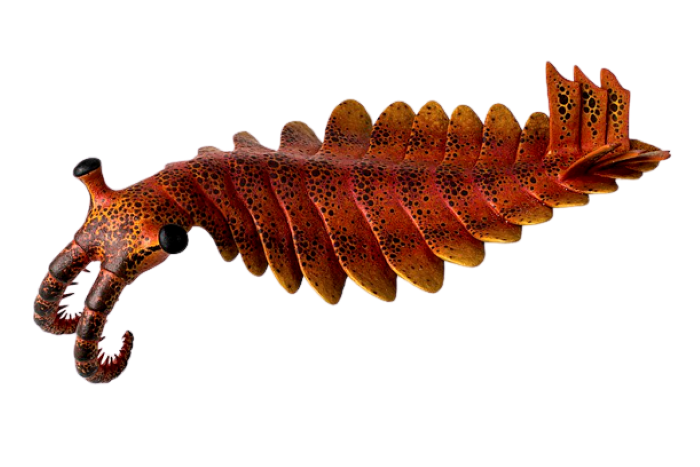
Anomalocaris means “unlike other shrimp” or “abnormal shrimp” and I’m sure you can see why. Potentially measuring up to one metre long (which is the standard height of a door handle), for the time it was alive, it was truly gigantic.
Its fossils were originally found in bits and pieces, which made it harder to work out. Scientists even found several body parts and thought they were separate animals.
Its appendages (long body parts, in this case, the curly bits on its head) were used for grasping. It also had giant eyes, with the biggest found about the size of a snooker ball! And these were compound eyes, meaning it had supervision.
It’s probably not surprisingly then that Anomalocaris is thought to have been a fearsome predator, grasping and eating small, soft-bodied animals for its dinner.
YUYUANOZoon
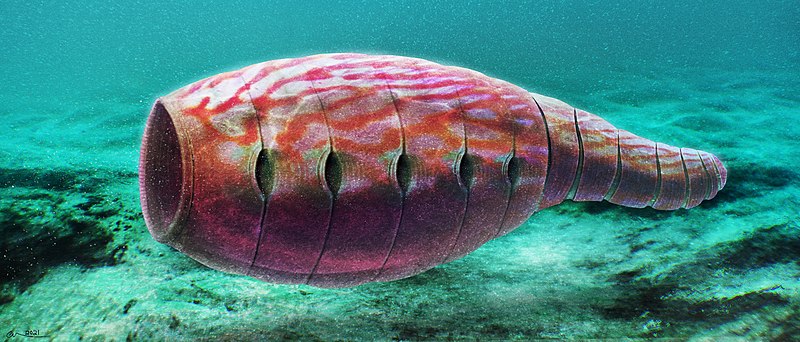
Now this egg-shaped animal is more than a little unusual. It’s basically just a cavernous, round body with a tail.
Yuyuanozoon had no appendages (like legs), or even any eyes. It did have a mouth but wasn’t able to grasp or chew anything, so probably didn’t hunt its food. But scientists haven’t yet agreed how it ate, which I find a bit unnerving – though maybe I’ve just watched too many monster movies. They do agree that as Yuyuanozoon was shaped a bit like a tadpole, it probably did a lot of swimming.
I definitely wouldn’t want to come across one. But saying that, it was only about 20cm long, which is the length of a pencil!
DINOMISCHUS
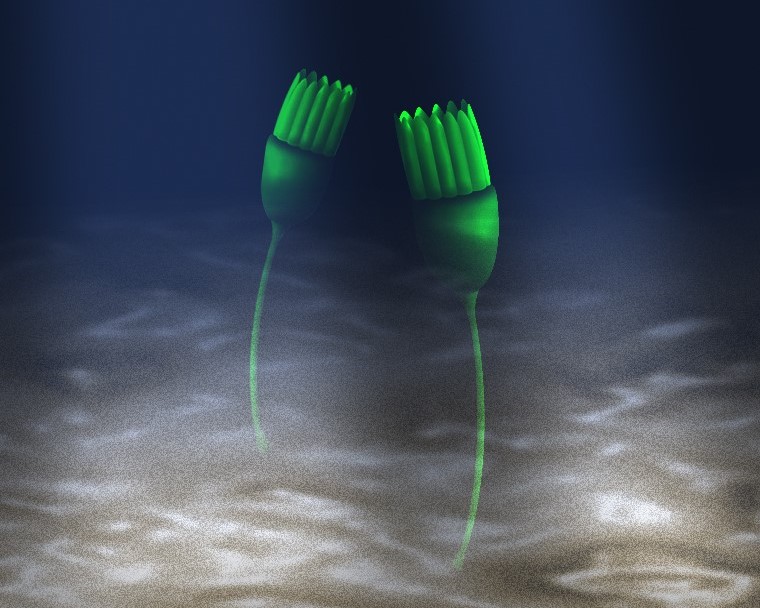
Dinomischus might look like an underwater plant, but believe it or not was an animal. Permanently attached to the ocean floor by a stalk, the cup-shaped “flower” at the top was actually its body and contained organs such as a stomach and gut. The “petals” would likely have wafted small pieces of food down towards it mouth. Who’d have thought it?
Fun fact: its mouth and anus (bum!) were next to each other. Just think about that.
OPABINIA
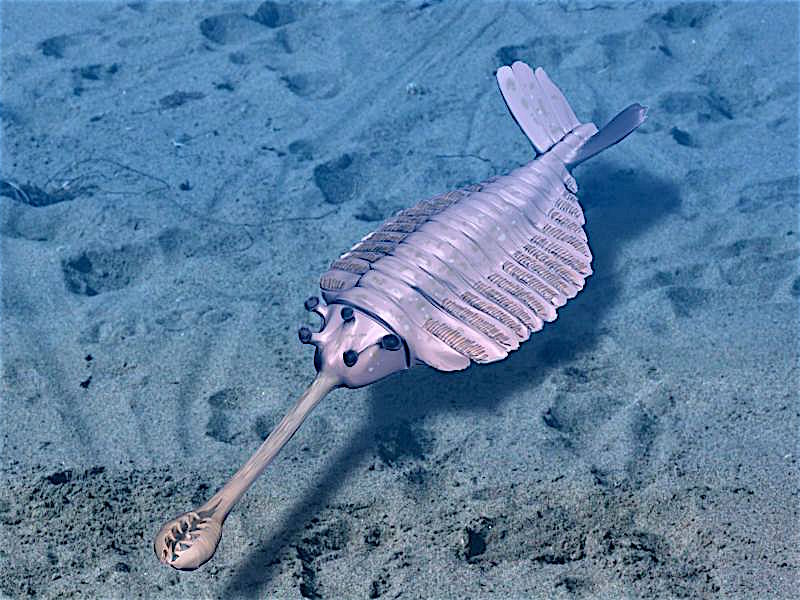
Like all these Cambrian animals, Opabinia is an odd one. It’s so peculiar that when it was first discovered and presented to an audience in 1972 … they all burst out laughing.
Opabinia had five mushroom-shaped eyes which faced different directions, a mouth that was backwards and a proboscis (or long mouthpart) that was not only flexible like an elephant’s trunk, or the hose of a vacuum cleaner, but ended with a grasping claw.
A small animal (about 7cm long, or the size of a mouse), it probably lived on the sea floor, using its proboscis to find small bits of food and pass them to its mouth.
CAMBROPACHYCOPE
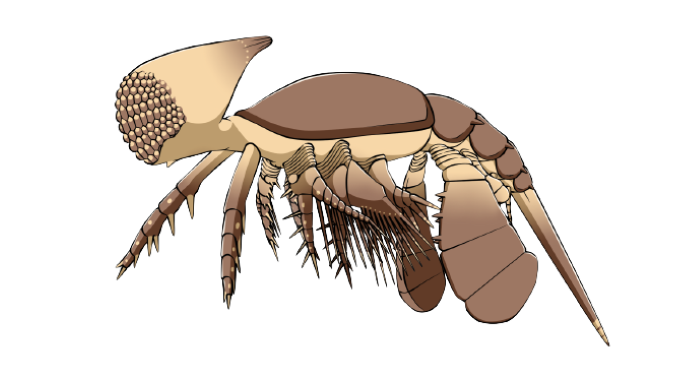
Now this looks like something straight out of Pokémon, not the Cambrian oceans.
And its body structure is bizarre as well. What appears to be a microphone-face is actually one, large compound eye on a stalk, which means Cambropachycope had better vision than most. What you might think of as its body is actually still its head. The front two “legs” are antenna or feelers (used for sensing things around it) and the mouth was found just behind them, between all the dangly bits, or appendages.
Weird enough, but it was also tiny – only about 1.5mm – about the same size as a flea.
WIWAXIA
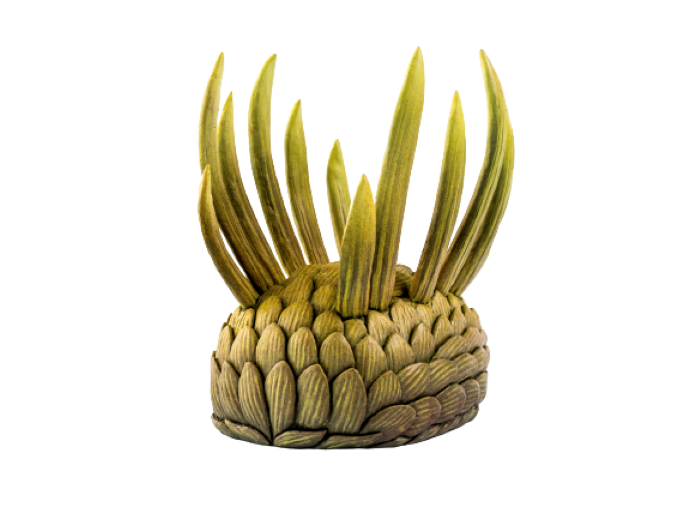
Despite having the appearance of a sea pineapple, Wiwaxia was actually a soft-bodied animal covered in scales and spikes that probably helped protect it from being eaten. Underneath it had a single muscular foot, like a slug! So it could move, but very slowly.
Enough fossils have been found that scientists have an idea of its life-cycle. Young Wiwaxia had scales (but no spikes) which would shed, or fall off, as it grew bigger, being replaced by new (and more) scales. Once it reached a certain size, the spikes would then appear.
If you picked one up and turned it over, you’d also find a mouth with two or three rows of sharp teeth. It sounds like the stuff of nightmares, but Wiwaxia probably used its teeth to scrape bits of food from the ocean floor.
BALHUTICARIS
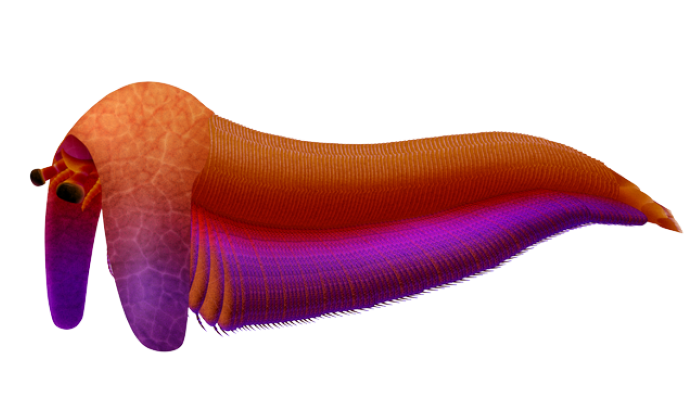
Another odd one, Balhuticaris reminds me of a hound dog with big, floppy ears.
These “ears” are actually more like a helmet. In fact its a carapace, or exoskeleton, like a shell you might find on a modern-day crab or turtle.
Balhuticaris is also unusual for having a body divided into lots of segments, or parts – over 100 in fact, with 110 pairs of tiny little legs. However, it would have found crawling on the ocean floor a bit tricky to say the least and instead was probably a strong swimmer.
Fun fact: scientists believe Balhuticaris might have swum upside down!
MARRELLA
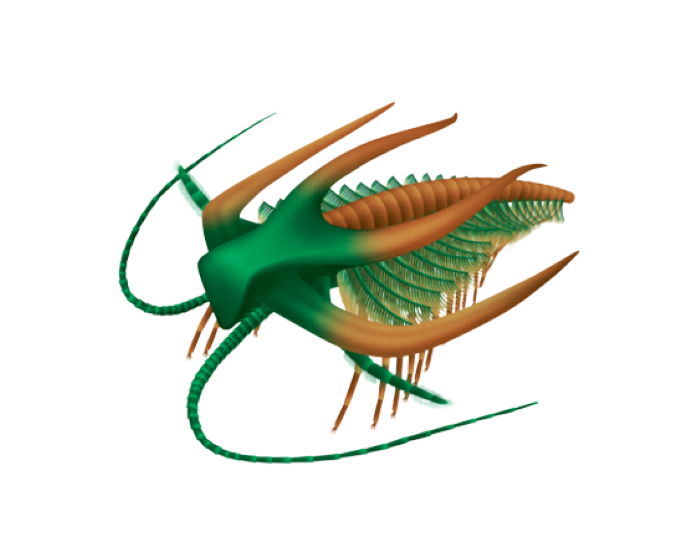
When first discovered, Marrella was described as a “lace crab”, though it looks more sci-fi to me. Like Opabinia, its unusual appearance caused a bit of a stir – no one had ever seen anything quite like it. It had a pair of antennae, two paddle-like appendages for swimming and a flexible body underneath a protective, spiky head shield. It also had lots of appendages that ended with tiny claws but so far, no evidence of any eyes.
It was probably an active swimmer just above the sea floor, and did the backstroke, incase you were wondering. Its antennae would have sensed nearby food which it may have collected with its body, before using its tiny claws to pass the food towards its mouth. No wonder it baffled scientists.
HURDIA
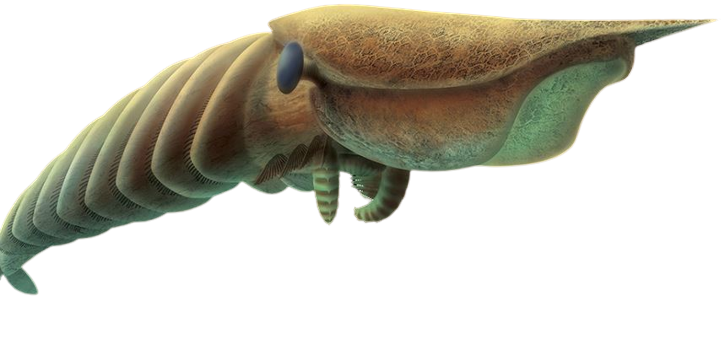
At first look Hurdia might remind you of a whale, and it was one of the largest animals in the Cambrian oceans … but was still only 30cm long (the length of a school ruler).
A cousin of Anomalocaris, like the “abnormal shrimp” it was probably a predator which ate soft-bodied animals. Scientists think this because of its large eyes and the two curled appendages on its head which would bring food to its spiny mouth.
Like Balhuticaris it had a large carapace (or shell) over the front of its head. However, shells are usually there to protect the soft parts of an animal, but in Hurdia’s case there’s nothing actually inside the shell. So its purpose is a complete mystery … for now?
WRAP UP
So, what did you make of these Cambrian oddities?
It’s amazing that fossils from over 500 million years ago can help us look back at long extinct animals. And that these creatures are so different from modern day animals they’re almost unrecognisable. Scientists have definitely had a hard time trying to work them out, and I’m sure there’s still more to discover.
If you have a favourite Cambrian animal, I’ve love to hear about it in the comments section below.
WHAT TO READ NEXT
If you enjoyed this not-so-romantic blog then here are some others you I recommend you could read next:
A brief guide to the Mesozoic Era

2 responses to “Strange sea animals from the Cambrian Period”
This was so interesting! Keep up the good work!! 🙂
Amazing! Really helped on a project I’m doing that focused on the Cambrian period.